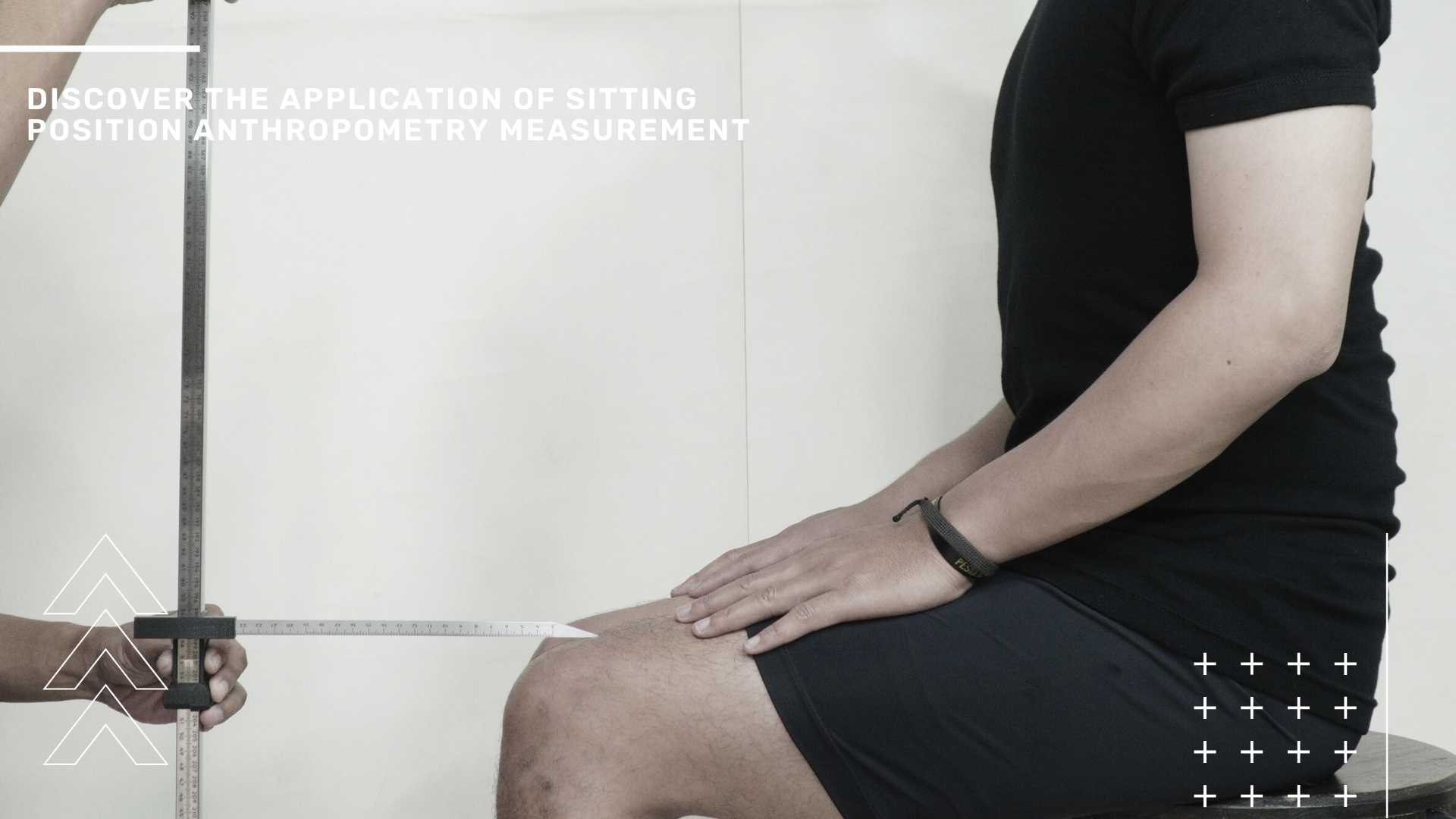In carrying out daily activities we often do it in a sitting position. Many sitting devices that we can find easily in furniture stores. But you know, it turns out that in designing household furniture, anthropometric measurements are needed. The main household furniture, chairs or sitting aids will support the weight of the human body. Therefore, anthropometric measurements are needed to accurately ensure body shape and provide comfort. So what are the dimensions of sitting position anthropometry measurements, and what are their applications? Let’s discuss it together!
What Is Anthropometry?
The term anthropometry is derived from the Greek words anthro which means human and metron which means measurement. In general, anthropometry is a study that deals with measuring the dimensions of the human body. Anthropometry is a part of ergonomics which is specialized in studying body size.

Anthropometry of sitting position is generally used for designing tools for sports facilities and furniture that utilizes a sitting position. The ergonomic design of the seat aims to optimize comfort and so that the seat is effectively useful for reducing the burden on muscles, tendons, skin and joints. Ergonomic design is used to reduce pressure on the structure of the spine and pelvis to avoid possible injury,
Dimensions of Sitting Position Anthropometry Measurement
Furthermore, anthropometric measurements are comprehensive, so even for activities that are considered simple, quite a lot of measurements are needed. No exception in the anthropometric measurement of sitting position. The following are the dimensions of anthropometric measurements for the sitting position :
- Sitting Popliteal Height (TPD), measures the vertical distance from the floor to the bottom of the thigh.
- Head Width (LKP), measures the width of the head by the way the subject looks forward and counts the head from the right side to the left side.
- Upper Shoulder Width (LBA), measures the horizontal distance between the two upper arms and the subject is sitting upright with the upper arms close to the body.
- Sitting Shoulder Width (LBD), a measurement with the subject sitting upright and measured from the outer side of the right shoulder to the left side.
- Sitting Hip Width (LPD), the method of calculating is with the subject sitting upright and measuring horizontally from the left side of the hip to the right side.
- Hand Grip Length (PGT), calculates the distance between the point of the back attached to the back to the point of the fist. With the position of the hands pointing straight ahead.
- Elbow Length (PRS), the measurement of the range of the outermost side of both sides of the elbow. With the subject sitting and extending both elbows horizontally right and left.
- Hand Stretch Length (PRT), a method of measuring the horizontal distance from the fingertip of the left hand to the tip of the right finger. The subject spreads his arms horizontally to the sides.
- Grip-to-Seat Height (PGD), measures between the subject’s seat base to the point of gripping the hand. With the position of the hands pointing up.
- Sitting Up Height (TDT), measures the vertical distance from the surface of the subject’s seat to the top of the head.
- Sitting Eye Height (TMD), measures the vertical distance from the seat mat to the inner corner of the eye.
- Sitting Shoulder Height (TBD), measures the vertical distance from the surface of the seat to the tip of the outermost shoulder bone.

- Sitting Elbow Height (TSD), measures the vertical distance from the seat mat to the lower end of the elbow. With the position of the upper arms straight down and the lower arms bent towards the front.
- Shoulder to Elbow Length (BKS), the measurement of the length from the outer side of the shoulder to the subject’s elbow. With the upper arm straight down and the forearm bent forward.
- Sitting Thigh Thickness (TPD), measures the distance from the surface of the subject’s seat to the upper surface of the subject’s thigh.
- Sitting Forearm Length (PLB), measures the distance from the elbow to the tip of the outermost finger. With the upper arm straight down and the forearm bent forward.
- Sitting Thigh Length (PPD), is used to measure between the hips to the inner knee. With the position of the subject’s feet sitting pointing forward.
These measurements are needed to estimate the design size of furniture or furniture products in detail.
Applications of Sitting Position Anthropometry Measurement
The dimensions of the measurement of the sitting position are carried out to support the comfort of the product with the right size and precision. So what products are anthropometric measurements of sitting position applied to?
Anthropometric measurements of sitting position are applied to the design of a number of products such as massage chairs, gaming chairs, work chairs, work desks, to designing a room. Not only to design a product, anthropometric measurements are also used to evaluate work systems. Each measurement dimension has its own role.

Anthropometric measurements of eye height when sitting for example, this measurement can be applied to design a meeting room of a company. Where is a good place to put a seat from the monitor screen, or presentation board screen. This is done so that employees feel comfortable and their eyesight is not damaged. Visibility will be damaged if the monitor/presentation board is too close or too far from the eyes of company employees.
To realize these things, quality and accurate anthropometric measuring instruments are needed.
The Most Accurate Anthropometric Measuring Tool
The results of anthropometric measurements in determining product and room design must be accurate and precise. Therefore, a measuring instrument is needed that supports these accurate results. Here is a selection of the best measuring tools that can be used :
Portable Anthropometry Kit for University
Metrisis – Portable Anthropometry produced by Solo Abadi Indonesia is an anthropometric measuring instrument derived from the anthropometric chair which is packaged in a portable form, so that the measuring instrument can be moved or carried anywhere easily. Like an innovation, portable anthropometry can be used to measure up to more than 100 dimensions of the human body.
The function of this tool is to carry out anthropometric measurements that are carried out carefully and prioritize the accuracy of the data. This instrument offers measurement capabilities of up to 100 measurements. In addition, its portable form makes this tool can be used unlimited time and done anywhere.
Anthropometric measuring instrument products from Solo Abadi have also been widely used as learning support facilities in the department of room design and product design at a number of universities in Indonesia. The following are the details of the Anthropometry Portable Kit product.
Contact Us To Get Anthropometry Products
Get anthropometric measuring tools from Solo Abadi by filling in the available ask for price. You can also connect directly through our WhatsApp, because we are ready to contact you immediately.








